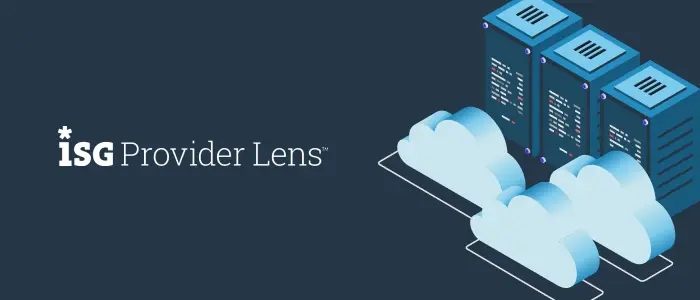
First came the cloud, then came hybrid and multi-cloud, all accompanied by the pressing need for a Cloud Management Platform (CMP) to help you manage and monitor your cloud services and resources. Here’s a basic primer on what you need to know to guide your search for the right CMP to meet your organization’s needs.
Just what is a Cloud Management Platform?
Let’s start with some industry basics.
Tech Target offers this definition: A cloud management platform is a suite of integrated software tools that an enterprise can use to monitor and control cloud environments. While you can use a cloud management platform exclusively for a private cloud or public cloud deployment, CMP tool sets commonly target hybrid and multi-cloud models to help centralize control of various cloud-based infrastructures.
The Gartner Glossary expands on the definition, describing CMPs as integrated products that provide for the management of public, private, and hybrid cloud environments. The minimum requirements to be included in this category are products that incorporate self-service interfaces, provision system images, enable metering and billing, and provide for some degree of workload optimization through established policies.
More-advanced offerings may also integrate with external enterprise management systems, include service catalogs, support the configuration of storage and network resources, allow for enhanced resource management via service governance, and provide advanced monitoring for improved ‘guest’ performance and availability.
Here at Morpheus, we see this definition continually evolving, due in part to the fact that cloud is now absolutely everywhere. It’s on-premises as much as it’s public ‘ and both hybrid cloud and multi-cloud have quickly become the new normal. It’s only logical that cloud management definitions and requirements continue to change.
What makes cloud management a complex domain
This cloud ubiquity is pushing development and operations teams closer together ‘ but not without lingering friction. As Gartner notes in its most recent Market Guide for Cloud Management Tooling, enterprises are intentionally and unintentionally needing to support multicloud deployments, which is stressing their current operational processes and tooling that is often focused on a single environment.
To build on that more specifically, we see platform engineering teams looking for better self-service approaches. At the same time, there’s more acknowledgment that operations teams have to enable cloud versus being worried about controlling it. In this modern world, organizations have specific functions and processes that need to happen at the individual ‘tree’ level within the larger ‘forest’ of cross-cloud management. (Sound way too familiar? I did share more thoughts on trees, forests, and hybrid clouds in an earlier blog.)
How do you pick the right CMP?
We’ve developed a practical guide for five areas to keep in mind when picking the best CMP for your current and future needs.
Step 1: Build and manage hybrid cloud
CloudOps and platform engineering teams must quickly connect hypervisors, networks, storage, and other technologies to create private cloud. At the same time, they need to manage public cloud accounts. Look for solutions that integrate with your existing technologies without needing a ton of scripting or extra costs for plug-ins.
Step 2: Consume hybrid cloud via self-service
The goal of self-service IT is to give users resources on demand without worrying about the underlying technology stack. The best hybrid cloud management platforms should provide self-service that meets different user needs across traditional and cloud-native platforms using GUI, IT service management like ServiceNow, API/CLI, or infrastructure-as-code triggers like Terraform).
Step 3: Assure hybrid cloud governance and control
Speed should not come at the expense of security and process. The ideal hybrid cloud management platforms should enable SecOps to apply control over cloud use, application provisioning, compliance policy, and security posture. This includes the ability to integrate with identity management providers and configuration management database repositories.
Step 4: Automate hybrid cloud apps and infrastructure
Legacy CMPs often fall short when it comes to meeting DevOps needs. You want a hybrid cloud management platform that can solve this by exposing full-fidelity APIs, integrating into pipeline tools like Jenkins, supporting infrastructure automation blueprint technologies such as Terraform, and managing day-2 activities for feedback loops.
Step: Optimize hybrid cloud costs
Not that long ago, cloud cost optimization was a standalone market. Today, visibility, cost reporting, and analytics are table stakes for FinOps. The best hybrid cloud management software can ingest brownfield clouds, consolidate usage data, leverage machine learning, and apply policies to reduce cloud cost.
All the areas of cloud management: Morpheus has it covered
We acknowledge that finding the best hybrid cloud and multi-cloud management platform for your workloads can be challenging. The reality is most legacy cloud management software was trying to solve a governance problem for IT Ops while others were focused on optimizing public cloud spend.
The world has moved on but many CMPs are still out there trying to solve yesterday’s problems. Morpheus is different. We were designed by DevOps pros as part of an application factory that needed agility, flexibility, and control. They couldn’t find the perfect tool so they built one. It’s why we combine the industry’s best cloud management with open container orchestration and powerful infrastructure automation.
Ready to learn more? Request a Morpheus demo to experience our cloud management platform for yourself.